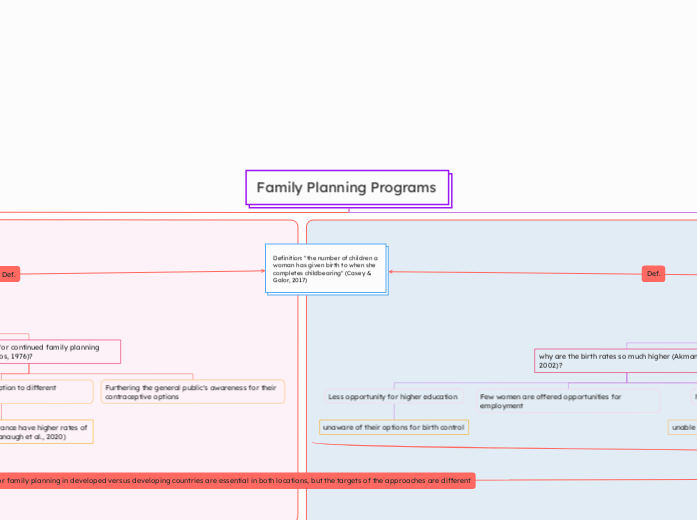References
Akmam, W. (2002). Women’s education and fertility rates in developing countries, with special reference to Bangladesh. Eubios Journal of Asian and International Bioethics, 12(4), 138-143.
Casey, G., & Galor, O. (2017). Is faster economic growth compatible with reductions in carbon emissions? The role of diminished population growth. Environmental research letters: ERL [Web site], 12(1), 10-1088.
Daniels, K., & Mosher, W. D. (2013). Contraceptive methods women have ever used: United States, 1982-2010. National health statistics reports, (62), 1–15.
Dryfoos, J. G. (1976). The United States national family planning program, 1968-74. Studies in family Planning, 7(3), 80-92.
Hamilton, B. E., Martin, J. A., Osterman, M. J., Driscoll, A. K., & Rossen, L. M. (2019). Vital statistics rapid release. Birth, 35, 39.
Kavanaugh, M. L., Douglas-Hall, A., & Finn, S. M. (2020). Health insurance coverage and contraceptive use at the state level: findings from the 2017 Behavioral Risk Factor Surveillance System. Contraception: X, 2, 100014.
Definition: "the number of children a woman has given birth to when she completes childbearing" (Casey & Galor, 2017)
Prevent STDs
Increase awareness of options available
increase equality of contraception access regardless of SES
Objectives of family planning programs
Organizations that advocate for policy changes in regards to higher education opportunities
Institute policies that give women more opportunities to be educated (Akman, 2002)
A study in India concluded that " "a 10 per cent
increase in the female literacy rate seems to be associated with a 0.5 decline in total fertility rate" (Akmam, 2002).
Increase their knowledge of contraceptive choices
Organizations in developed countries gather funding and resources to bring to developing countries (Cocks, 2018)
Increase immediate access to contraception in communities that do not have access
disperse free contraception
Family Planning Programs
Developing Countries
Fertility rate
The average birth rates for many developing countries are "considerably higher (at about 4.0 babies per woman)" (Casey & Galor, 2017).
why are high birth rates concerning?
rapid population growth (Casey & Galor)- not a comprehensive list of the implications
increases water, air, and general pollution
increases prevalence of communicable diseases
increases fetal and maternal mortality
will increase the already high poverty rates
why are the birth rates so much higher (Akmam, 2002)?
underdeveloped healthcare systems
do not offer birth control
high poverty rates
unable to purchase birth control
Few women are offered opportunities for employment
Less opportunity for higher education
unaware of their options for birth control
North America/Europe
Fertility rate
The birthrate in the U.S. hit a new low of 1.62 in the year 2019 (Hamilton et al., 2019)
what is the need for continued family planning programs (Dryfoos, 1976)?
Furthering the general public's awareness for their contraceptive options
equal access of contraception to different socioeconomic classes
People with medical insurance have higher rates of using contraception (Kavanaugh et al., 2020)
prevention of STDs
Why are birth rates comparatively lower?
developed healthcare systems
99% sexually active women (ages 15-44) "have used at least one contraceptive method at some point in their lifetime" (Daniels & Mosher, 2013).
comparatively low poverty rate
Women have more opportunities for employment
Available opportunities for higher education









